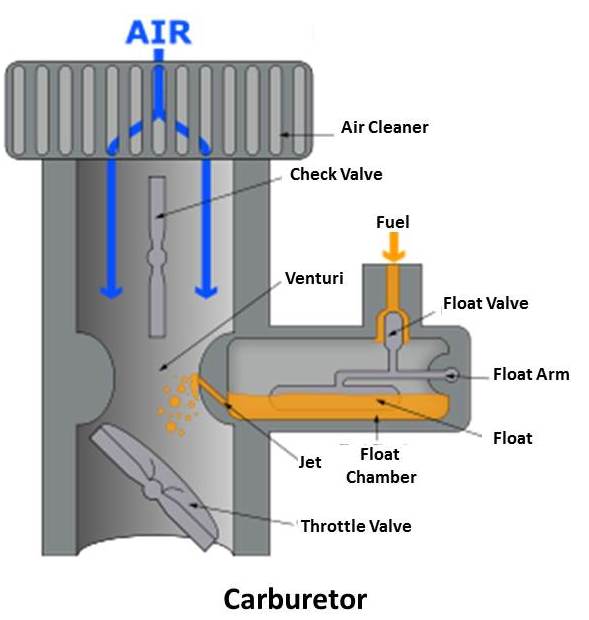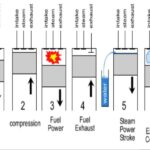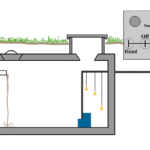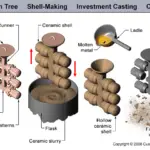The internal combustion engines require basically two types of fuel one is petrol for spark ignition engine and other is diesel for compression ignition engines. Here you will study about only spark ignition engine whose working depends on the petrol which is a volatile fuel.
As we know the working of SI engines so the question is how the mixture of air and fuel is prepared and what is the exact ratio of the mixing at different conditions? All these tasks should be done before it enters into the combustion chamber of the engine or in the cylinder. It is very important to prepare a proper mixture of air and fuel.
This requirement is completed by the carburetor. It is a small device which controls the fuel supply and prepares an exact amount of air-fuel and makes a homogeneous mixture. The process of preparing the accurate mixture of air-fuel before entering into the engine’s combustion chamber is known as carburetion.
Carburetor:
Principle of operation:
The principle of the carburetor is based on the Bernoulli principle. In simple words, we can say that as the velocity increases then the pressure will decrease. The air and gasoline go into the combustion chamber of the engine through the carburetor. The main principle and working of any carburetor is depended only on the venturi tube which is the main part of carburetor. The pressure difference between the throat of the venturi and float chamber is responsible for the rate at which fuel/gasoline discharge into the air. The pressure difference decides the mixing ratio of air and fuel which is controlled by the throttle valve.
Working:
The working of the simple carburetor is very easy to understand if you have a clear idea about the basic principle of operation because only the Bernoulli principle is responsible for the whole operation. The working of carburetor is as follow:
- The fuel form the fuel tank enters into the float chamber of the carburetor. There are several types of equipment are used in the float chamber to maintain an exact level of fuel in it such as fuel supply valve, float pivot etc. The fuel enters into the float chamber through a strainer which a kind of filter. Strainer removes the dust particle from the fuel. It is very necessary because the dust particles may block the path for the fuel in the orifice.
- A fuel discharge nozzle is connected between the venturi tube and the float chamber. The discharge nozzle is arranged in such a way that it starts from the bottom of the float chamber and ends in the middle of the venturi tube. There is always a height gap between the end of the nozzle in venture and fuel level in the float chamber.
- As the engine starts working the fuel level go down into the float chamber then fuel supply valve comes into play it opens the fuel supply into the float chamber and then closed automatically when fuel reaches its required level.
- In the suction stroke of the engine piston moves down which cause suction into the venturi tube which results atmospheric air enters into the venturi tube. As air moves towards the throat of the venturi tube then the area starts decreasing due to this velocity of the air increases. At the throat of the venturi air gains its maximum velocity, now according to the Bernoulli principle pressure will reduce as the velocity increases so the minimum pressure of the air is at middle of the throat that’s why the end of the discharge nozzle is always arranged at the middle of the throat.
- The above process creates a pressure difference between the venturi tube and the float chamber. As we know that flow always takes place from high level to low level, the same condition happens here, fuel from the float chamber is discharged into the venturi tube through the fuel discharge nozzle and supply tube. In throat the atomization of the fuel takes place and an air-fuel homogeneous mixture formed.
- The quantity of this mixture is controlled by the throttle valve and the speed of the engines is also controlled by the opening and closing of the throttle valve. The air-fuel ratio is controlled by using some special mechanism in the same carburetor but initially, the air and fuel ratio depends only on the discharge of jet and the velocity of air.
- Mainly the preparation of the air-fuel mixture is done for three different speed ranges i.e. idling, Crushing and high power range. For idling and high power enriched mixture is required whereas for crushing leaned mixture is required.
This is all about basic principle and working of a simple carburetor. If you have any doubt regarding this article, ask by commenting. If you like this article, don’t forget to share it on social networks. Subscribe our website for more informative articles. Thanks for reading it.




